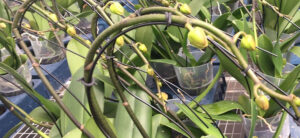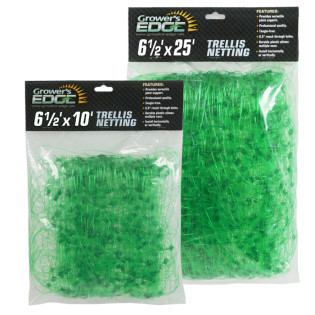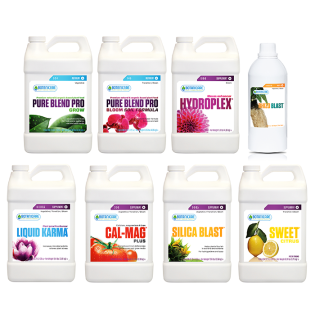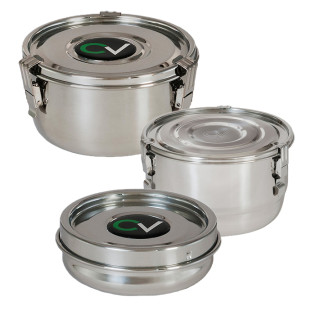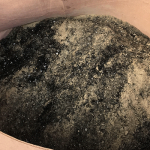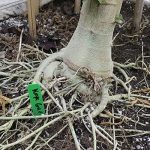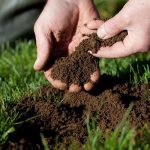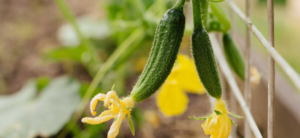
For growers looking to increase yields and make the most of a limited growing space, low stress training, or LST, is a must learn tactic.
This is one of the two types of plant training out there, and a better approach for newer growers or those looking to manipulate the way in which their plants grow.
Whether you’re growing indoors or outdoors, you can implement this approach to your next grow and watch in amazement as you dictate the direction of your plant’s growth, while increasing yields per plant.
In this complete guide, we’ll explain why so many growers swear this is the best ‘hack’ in the garden, along with when and how to do it. Before all that, we need to explain what exactly it is!
What Is Low Stress Training (LST)?
Low stress training, also known as LST for short, is a gardening technique in which you physically manipulate your plants to dictate which direction they grow - either vertically or horizontally.
In most cases, growers implement LST on their plants to grow wider, rather than taller. This is particularly the case indoors, where head height is limited.
Why exactly would you care about a wide canopy? Well, consider how light gets into your plant. When growing outdoors, your plants naturally receive light from the sun. The sun moves across the sky, hitting your plant from different angles. But even still, the top of your plants get most of the light.
When you grow inside, this is an even bigger problem. Your plants only get light from your overhead grow lights. The result is a plant that grows tall, with a few main colas dominating plant growth.
What Does Low Stress Training Do?

The main premise behind LST is that you can expose your plant to more light, and thus, create a wider plant that receives light deeper into the canopy.
You’ll increase yield with bigger colas throughout the plant, and fewer popcorn buds. This leads to an overall increase in yield.
But another benefit, particularly for those growing in smaller, more confined spaces indoors, is the ability to get the most out of your grow room or grow tent.
Let’s get a little scientific for a minute. In our plants, their natural tendency is to grow with apical dominance - where one cola takes most of the nutrients and energy to dominate the plant.
When you low stress train plants, the hormone responsible for this apical dominance - auxin - is redistributed throughout the plant. Lateral branches then get the chance to grow into large colas of their own, increasing yield.
How Much Does LST Increase Yield?
Many growers ask, how much does LST increase yield? It’s tough to give a definitive answer, as there are so many variables in the grow room. Light intensity, available CO2, nutrients, and more all dictate yield.
But, some growers report up to a 200% increase in yield when making the switch from doing nothing at all to low stress training their plants.
While this technique may not increase yield to the extent of high stress training, such as super cropping, it’s far more simple, and you can get started without many supplies or much effort. Let’s dive into what all goes into the technique.
Low Stress Training Step By Step Guide
Low stress training is super easy, and just requires some sort of plant tie or string to tie the plant down. The first lesson in how it works is learning when to start training your plants.
When Should You Start Low Stress Training Plants?
The earlier you can start low stress training your plants, the better. We’ll spoil the technique now and describe it in greater detail later - you essentially bend your plant over by the main stem and tie it down.
This means the plant needs to be very malleable, so you don’t damage the delicate young tissue.
As a good rule of thumb, wait till the plant is at least 4”-6” tall, with a few sets of true leaves already formed.
Put Holes In Your Garden Pots
You’re going to be using the edge of your garden pot to tie your plant to, so you’ll need to install holes in the rim if your container doesn’t already have them.
Our selection of garden pots contains some of the best the horticulture world has to offer, from fabric pots to plastic pots.
Some of the containers we carry have holes along the rim, making it easy to LST your plants.
Tie Back The Dominant Shoot Of Growth
Then, simply loop your plant string, pipe cleaner, or plant wire through this hole, and pull your plant down, and tie it down.
You’ll want to make sure your plant is secure in the tie, so wait till you can tie around a set of leaves. There should be at least an inch or two extended over the rim of the plant, to make sure your plant is truly horizontal.
In some cases, you’ll have more than one main cola, so tie these down as needed. The result will be a super wide plant, with a strong base and a better chance of achieving its genetic potential.
If you don't have the ability to tie your plant to the edge of your plant, you can put a soft hook in your media and loop your malleable plant through it gently, bending it over directly in the grow media, like you see below.
If You Damage Your Plant, Repair With Duct Tape
If you low stress train your plants when they’re young and bendy, you shouldn’t have any problems.
But should you damage the tissue of your plant, don’t stress too much.

Plants are very resilient and have the ability to repair their injuries just like us.
You can help them recover by covering the wound in duct tape to protect them from pest or disease entry.
Continually LST Your Plants As Needed Throughout Veg
After your initial LST session, you’ll have new growth shooting up along your new, wider canopy.
As needed, you can choose a new stem to bend over and open up your canopy more.
You’ll want to keep LSTing your plants if one or two shoots start to take over and exhibit apical dominance.
This isn’t a strategy you just implement once. Keep training the plant to grow how you want, and get the most out of each plant.
When To Start Flowering Your Plants
With LST, you need to start flowering your plants at the right time to take full advantage of all your work.
There are two things you need to look for to determine when you’re ready to make the flip to flower. (assuming you’re an indoor grower - if you’re growing outdoors, you have less control over this).
For one, you need to make sure you’ve trained your plants canopies into a horizontal shape. The second part of the equation is the overall height of your plant.
You should flip to flower when your plant is about half the desired height, as it will stretch dramatically during the switch.
Continue To LST Your Plants During The Flower Stretch
During the first couple days, or sometimes, weeks, of flower, your plants will stretch a ton. They can double their size within a week, which is why we recommend making the flip when they’re about half your desired height.
And during this stretch, you’ll see lanky, vertical growth. If necessary, continue to LST your plants, tying down fresh growth if it shows apical dominance.
However, don’t overdo it. Your plants are already going to be pretty stressed when changing the lighting schedule from veg to flower.
And while this is technically a very low-stress form of training, it could overwhelm your plant. Of course, many growers seek out this increased stress to push out even more terpenes, growth, and potency, so the choice is ultimately yours!
But once you start to see substantial flower development, your work will be done, and you can let your ladies flower in peace.
Can I Start Low Stress Training My Plants During Flower?
Many growers get to flower, and become much more aware of the apical dominance their plants are displaying once flowers start to set.
Unfortunately, you cannot begin low stress training during the final stages of flower development. You are late to the party.
Of course, you can open up and tie back some of the larger buds if they get in the way of large portions of your plant getting light. But do not attempt to tie back sturdy branches, as these are more prone to snapping.
Low Stress Training Autoflowering Plants Step By Step Guide
The aforementioned steps are what most growers will follow. But if you’re growing autoflowering plants - meaning those in which you cannot manipulate the photoperiod for - you’ll need to be a bit more strategic.
The reason for this is autoflowers begin setting buds on their own schedule. And these tend to grow quicker, so you’ll have less time to train, and thus need to be quicker.
Also keep in mind that because they have less time to recover from stress and reap the benefits of stressing your plants, timing is everything.
Start low-stress training auto flower plants around the 2nd or 3rd week of sprouting, once they are tall enough. Some autoflowers start flowering as soon as the fourth week, so get started as soon as possible.
Final Thoughts On Low Stress Training Plants
Low stress training is a great way to increase yield without investing in higher quality lights, nutrients, or more growing space. This is a simple tactic to help your plants achieve their full genetic potential.
And now that you know how to low stress train your plants, you can implement this strategy in your next grow cycle.
If you want to learn more about the different types of plant training, read our complete guide. You’ll discover every type of training out there, LST and HST alike!
And while you’re here, grab all the garden supplies you need to get it done. We have all the plant training and support products you need.





